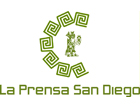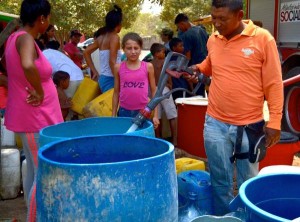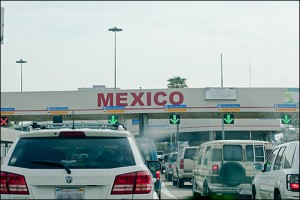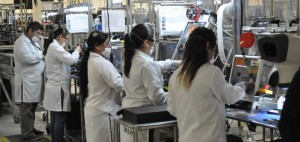By David Avalos
La Prensa San Diego
the bipartisan group of Senators known as the “Gang of Eight” put their plan for “comprehensive immigration reform” before the USAmerican public, and once again served the Chicana/o community a Mexican Combo Platter steaming with piles of beefed-up border security smothered in drones, refried Bracero guest worker programs, and microwaved workplace enforcement.
Citizenship for the estimated 11 million immigrants in the country without legally adjusted status, (“amnesty” to conservatives) went sour when gang member Marco Rubio told Fox News “it will be cheaper, faster and easier for people to go back home and wait 10 years than it will be to go through this process that I’ve outlined.”
Herman Baca of the Committee on Chicano Rights (CCR) feels the Chicana/o community has no voice in the debate because it has forgotten the lessons of Bert Corona who introduced the foundational ideas and approaches to establishing immigrant labor rights in this country.
Baca remembers being astonished when in 1972 Corona told him that the Chicana/o community must address the issue of immigration because it would affect our people far into the future. Corona declared that, “No human being is illegal.” Baca listened and became the first Chicano activist in San Diego to incorporate immigrant rights into all his organizing efforts.
From the 1930s to his death in 2001, “Corona, while unknown to many in the US, struggled … to raise the issue of the undocumented worker to the forefront of US public policy discussion” Baca remembers. He considers Corona to be the father of the immigrant rights movement.
Bert Corona
Humberto Noé “Bert” Corona arrived on the border on May 29, 1918 born to Mexican immigrants in El Paso, Texas. His father had been a commander in Francisco Villa’s revolutionary army; his mother a schoolteacher. In 1937 he traveled to USC on a basketball scholarship and became active with the Mexican American Movement of Los Angeles-area college students. A union organizer, he was elected President of Los Angeles’ International Longshoremen’s and Warehousemen’s Union Local 26 in 1941.
He helped Josefina Fierro of the Congreso de Pueblos de Habla Española in her initial stages of organizing the Sleepy Lagoon Defense Committee. The Committee won freedom for twelve Los Angeles Chicanos vilified in the media as a Zoot Suit gang and wrongfully convicted of murder in 1942.
After service in US Army, Corona became active in the Asociación Nacional México-Americana whose primary goal was to unionize Mexican workers including Braceros. From 1942 to 1964 the federal government’s Bracero Program authorized Mexican nationals to perform farm labor as “guest workers” throughout the States. US Department of Labor official, Lee G. Williams, who oversaw the day-to-day operation of the Program, termed it, “nothing short of slavery … a way for big corporate farms to get a cheap labor supply from Mexico under government sponsorship.”
At the time of his death on January 15, 2001, Corona was Director of the Hermandad Mexicana Nacional, a group originally founded by labor leader Felipe Usguiano to represent braceros in San Diego in 1951. Corona became director in 1976 and continued to the end to defend immigrants’ rights, organize unions, and provide social services.
Members of the CCR drove north to memorial services for Corona on January 20. Waiting to march with an unexpectedly small crowd to St. Vincent Catholic Church for the funeral service, Baca was shaken.
“I can’t believe there aren’t more people here for Bert,” he muttered. “Think of the tens of thousands of people he helped get immigration papers. Where are they all?” he wondered. Baca determined to do his part to keep his mentor’s memory alive.
In 1960 Corona and others founded the Mexican American Political Association (MAPA) to increase the civic engagement of Mexican Americans by mobilizing political power through education and full participation in the political process.
At a MAPA statewide convention in 1971 Corona impressed Baca who recalls that “he was the first Mexican I saw bring politicians to the podium and demand accountability, asking them what they wanted from the organization and what they would do for the community in return.” Baca went on to establish a MAPA chapter in National City.
Baca began working closely with CASA-Justicia a National City social service agency modeled after Centro de Acción Social Autónomo-Hermandad General Trabajadores, (CASA-HGT) in Los Angeles. In 1968 Corona and Soledad “Chole” Alatorre had launched CASA-HGT as a self-help social service agency for Mexican workers and families seeking to regularize their immigration status. It provided legal services and politically oriented rights education as an organizing strategy. CASA-Justicia did the same while governed by a Board of immigrant workers.
In an analysis distributed at a University of California Riverside Immigration Reform Summit last month Baca writes that Bracero type guest worker proposals are proof that so-called immigration solutions are really designed to solve labor problems created by the U.S. economy’s “addiction for cheap, and exploitable labor…”
Finish reading Bert Corona: Chicano Park Mural Recognizes the Father of the Immigration Movement





